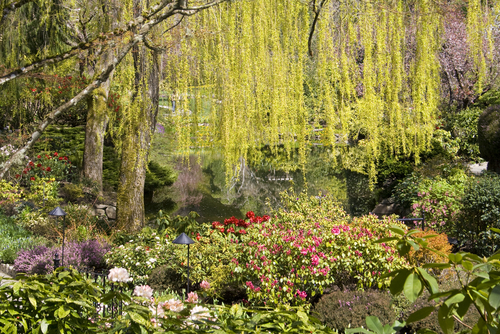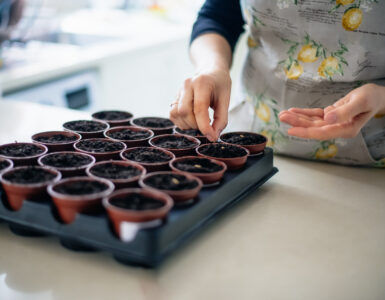Darin Engh from Engh Gardens has some tips to make your garden a place for kids, a place to unwind or a place to enjoy a meal.
Family Gardens
Children make the most demands on a garden, not least because they require a play area, which may not always be compatible with the kind of flower garden you have in mind, but also because the plants near play areas have to be much tougher to withstand the occasional ball or rowdy play. It’s a good idea to ban thorny or prickly plants, such as roses, in this area, to avoid unnecessary injuries. Where there are very small children, ponds are not a good idea unless they are well protected. Some people fence them off or install protective metal covers for them, but such devices will not enhance the visual appeal of your pond and can be decidedly off-putting. It may be better to choose a water feature without standing water while children are young.
Family gardens have to be multi-purpose, but, unless the garden is large, it may be necessary to place the design emphasis on one or two particular needs. If you do lots of entertaining, then a barbeque and seating area is likely to be a priority; if you seldom ask people around for outdoor meals but have young children who need somewhere safe and secure to play, a lawn and play area may be more important to you.
Children can enjoy “adult” gardens, too, especially if there are lots of interesting shrubs and plants. Plants with big or bold leaves, or insectivorous plants, will stimulate their imagination and encourage interest as they grow.
A play area can be incorporated into the garden plan as easily as any other feature. Position a sandbox between flowerbeds. Using a small bed to divide up the play zone, ensures it forms part of the garden and is not perceived as an appendage divorced from the garden proper.
It is possible to create a stylish design that will appeal to parents and children in equal measure. A well-designed garden should be flexible enough to accommodate a safe play area for children and an entertainment and dining area for the whole family to enjoy.
A lawn for play is an essential part of a garden that young children can enjoy, but it can be a challenge to accommodate larger toys such as swings and or see-saws. Position toys in a large area of the lawn screened from the house by shrub, a border that is clearly visible for supervision, but an “adult” space can easily be reinstated when the toys are no longer required.
Seating is an integral part of most gardens, but in a family garden it can be used to suggest a place for everyone – children and parents – to sit and enjoy the pleasures that outdoor living and a well-planned garden can bring.
Family gardens should look lived-in, and loungers and hammocks will create this relaxed and friendly atmosphere. Hammocks or swings in a corner of the garden can be shared by all generations of the family. Loungers can be moved around the garden with ease. If you use a bold color, they will act as a focal point.
From urban elegance and outdoor entertaining to enchanted jungles and secret gardens, any garden can be the perfect place to relax in, to unwind from the stresses of a busy life, and still cater to the adventures of children.
Get the kids gardening!
There can be few things as good for the soul as gardening. Not only do you get to enjoy the fresh air and a spot of exercise, but you are paid beck tenfold for all your efforts when those tiny seedlings push up through the soil when you drop your first sun-warmed leaves into the salad bowl. Teach your children how to sow, pot up and care for plants now and it’ll be something they’ll treasure forever.
Include fruit trees, vegetables, and other fruits kids can help you harvest.
Kids can also help pollinate vegetables, including tomatoes. Have children touch each blossom with a dry paint brush.
Children can also scratch their name into a small squash; as the squash grows their name will too.
For more information on garden tips visit www.enghgardens.com















Add comment